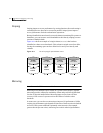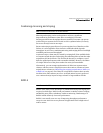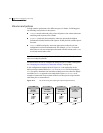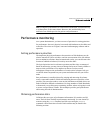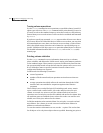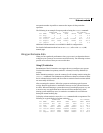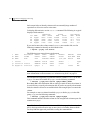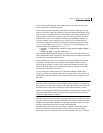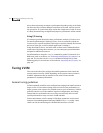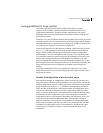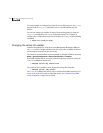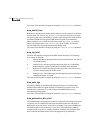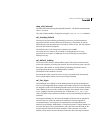
472 Performance monitoring and tuning
Tuning VxVM
writes where mirroring can improve performance depends greatly on the disks,
the disk controller, whether multiple controllers can be used, and the speed of
the system bus. If a particularly busy volume has a high ratio of reads to writes,
it is likely that mirroring can significantly improve performance of that volume.
Using I/O tracing
I/O statistics provide the data for basic performance analysis; I/O traces serve
for more detailed analysis. With an I/O trace, focus is narrowed to obtain an
event trace for a specific workload. This helps to explicitly identify the location
and size of a hot spot, as well as which application is causing it.
Using data from I/O traces, real work loads on disks can be simulated and the
results traced. By using these statistics, you can anticipate system limitations
and plan for additional resources.
For information on using the
vxdmpadm command to gather I/O statistics for a
DMP node, path, or enclosure, see “Gathering and displaying I/O statistics” on
page 144. You can also use the
vxdmpadm command to change the I/O load-
balancing policy for an enclosure as described in “Specifying the I/O policy” on
page 147.
Tuning VxVM
This section describes how to adjust the tunable parameters that control the
system resources used by VxVM. Depending on the system resources that are
available, adjustments may be required to the values of some tunable
parameters to optimize performance.
General tuning guidelines
VxVM is optimally tuned for most configurations ranging from small systems to
larger servers. In cases where tuning can be used to increase performance on
larger systems at the expense of a valuable resource (such as memory), VxVM is
generally tuned to run on the smallest supported configuration. Any tuning
changes must be performed with care, as they may adversely affect overall
system performance or may even leave VxVM unusable.
Various mechanisms exist for tuning VxVM. Many parameters can be tuned
using the System Management Homepage (SMH) or the
kctune utility. Other
values can only be tuned using the command line interface to VxVM.



